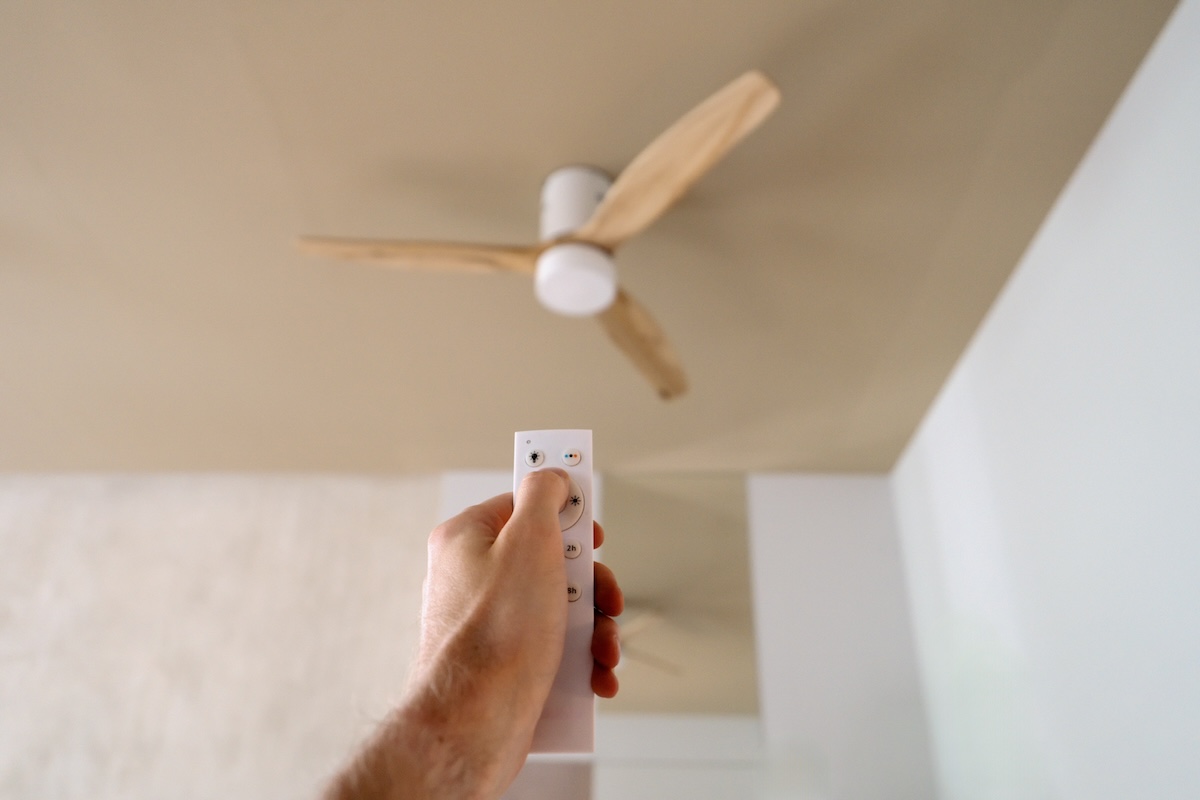

We may earn revenue from the products available on this page and participate in affiliate programs. Learn More ›
Seasonal redecorating is fun, but it can often be perceived as an unnecessary expense or even wasteful if your only goal is just a visual refresh. But what if redecorating could actually help you boost energy efficiency and save money in addition to elevating the look of your home?
With energy costs rising and heat waves popping up, this is a great time to make some design tweaks to help reduce energy usage. Here are five energy efficient decor tips to help keep your energy bills down throughout the summer season and beyond.
Buy smart furniture and electronics.
When shopping for new furniture, you may now find some smart tech options. These innovative designs include embedded technology, sensors, and connectivity features that enhance their functionality, convenience, and usability. They may have built-in USB charging ports, sensors, and Bluetooth speakers; wireless charging; touch lighting; and fingerprint unlock capabilities. Examples include tables that can charge devices wirelessly, sofas with built-in speakers and charging ports, and desks with height presets that automatically adjust.
Not only does smart furniture improve your overall living experience by boosting comfort, convenience, and customization, but it can also help save energy. This is because of features like motion sensors and timers that automatically shut power off when not in use. Smart furniture can also link up to a home smart hub to automate functions and optimize energy use.

Install ceiling fans.
Another simple way to both beautify a room and save energy is to install a ceiling fan that matches your décor theme, whether that be anything from traditional to ultra-modern. Ceiling fans reduce home energy consumption by creating air circulation that makes rooms feel about 4 degrees cooler than the actual temperature, so you can bump up your thermostat and run the AC less.
Even raising the thermostat by just 2 to 3 degrees can lead to substantial energy savings. Be sure to set ceiling fans to run counterclockwise during the summer in order to push the air downward.
Upgrade lighting.
New light fixtures can change the look and feel of an entire room. When you swap your old light fixtures for more decorative and unique ones, be sure to also choose efficient light bulbs. By switching out incandescent bulbs for light emitting diodes (LEDs) that use about 90 percent less energy and last up to 25 times longer, you will be sure to cut your utility bills. In fact, the average household can save up to $225 per year on lighting bills by making this easy substitution.
When purchasing light bulbs, look for the Energy Star logo on the package to ensure you’re buying energy-efficient bulbs, and always check that the fixtures you are considering take LEDs. For even more energy savings, install dimmer switches and motion sensors throughout your home, too.

Choose paint colors strategically.
Many homeowners are familiar with the idea that painting a home’s exterior a light color can help reduce energy consumption. This concept applies to interior walls as well. Lighter colors tend to reflect more light and keep a space cooler, while darker colors absorb more light and raise the temperature. This means that choosing a lighter hue, such as white, beige, light gray, or pale yellow, can help a room feel cooler and reduce your energy bill.
Refer to a paint’s LRV (Light Reflectivity Value) typically printed on the back of a paint swatch to determine how cooling a paint color can be. LRV ranges from 0 to 100, with 0 being true black, and 100 being true white. The closer to 100, the more light your paint color will reflect. Finally, opt for glossy or satin over matte finishes, as matte absorbs more heat.
Rearrange furniture.
How you decide to set up your furniture can also play a role in energy savings. Whether you are buying new pieces or in the mood for a fresh layout using existing furniture, it’s important to place items in such a way that helps optimize air circulation in the room.
Avoid placing furniture where it can block any air vents or ceiling fans since this will prevent air flow and make your HVAC system work harder. It’s also a good idea to keep furniture away from windows since you could feel warmer sitting closer to the sun penetrating through the glass and want to turn the thermostat down. Finally, design an open layout and create a cooling pathway with your furniture to help circulate air, reduce hot spots, and enhance the efficiency of the AC.
